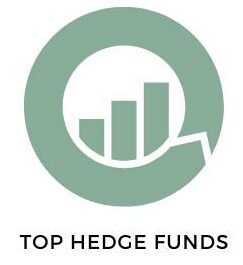As we approach 2025, the global financial landscape is marked by volatility and uncertainty. Factors such as geopolitical tensions, inflationary pressures, and shifting monetary policies have created an environment where traditional investment strategies may no longer suffice. Hedge funds, known for their agility and diverse strategies, are proactively preparing for these challenges. In this blog, we’ll explore how hedge funds are gearing up for economic uncertainty in 2025 and the strategies they are employing to safeguard their investments.
1. Understanding the Economic Landscape
1.1. Key Factors Influencing Economic Uncertainty
Several factors are shaping the economic outlook for 2025:
- Geopolitical Risks: Ongoing conflicts and trade tensions can disrupt markets and supply chains.
- Inflation: Rising inflation rates challenge central banks, prompting tighter monetary policies.
- Technological Disruption: Rapid technological advancements can create both opportunities and risks for various sectors.
1.2. The Role of Hedge Funds
Hedge funds are uniquely positioned to navigate these complexities due to their flexibility and diverse investment strategies. They can quickly adjust their portfolios to respond to changing market conditions.
2. Diversification of Investment Strategies
2.1. Expanding Asset Classes
In uncertain economic times, hedge funds are diversifying their investments across various asset classes, including:
- Equities: Focusing on sectors that are likely to outperform, such as technology and renewable energy.
- Fixed Income: Allocating capital to bonds that offer protection against inflation.
- Commodities: Investing in precious metals and agricultural products as a hedge against inflation and geopolitical risks.
2.2. Alternative Investments
Hedge funds are increasingly looking at alternative investments, including private equity, real estate, and cryptocurrencies. These assets can provide diversification and potentially higher returns compared to traditional investments.
3. Enhanced Risk Management Techniques
3.1. Employing Advanced Analytics
Hedge funds are leveraging advanced data analytics and artificial intelligence to assess risks more effectively. By analyzing vast amounts of data, they can identify potential threats and opportunities in real-time.
3.2. Stress Testing and Scenario Analysis
Many hedge funds are conducting stress tests and scenario analyses to evaluate how their portfolios would perform under various economic conditions. This proactive approach allows them to make informed adjustments to their strategies.
4. Increased Focus on Macro Trends
4.1. Global Macro Strategies
Hedge funds are adopting global macro strategies that focus on macroeconomic trends and geopolitical developments. By positioning themselves to take advantage of economic shifts, these funds can benefit from currency movements, interest rate changes, and commodity price fluctuations.
4.2. Monitoring Central Bank Policies
With central banks around the world adjusting their monetary policies in response to inflation and economic growth, hedge funds are closely monitoring these developments. Understanding the implications of these policies allows them to position their portfolios accordingly.
5. Utilizing Hedging Techniques
5.1. Options and Derivatives
Hedge funds are increasingly utilizing options and derivatives to hedge against market downturns. These instruments allow funds to protect their positions while maintaining exposure to potential upside.
5.2. Short Selling
Short selling remains a key strategy for hedge funds, especially in uncertain markets. By betting against overvalued stocks or sectors, hedge funds can profit from declines and offset losses in other areas of their portfolios.
6. Building Resilient Teams
6.1. Attracting Talent
In preparation for the challenges of 2025, hedge funds are focusing on attracting top talent with expertise in risk management, data analytics, and emerging technologies. A skilled team can enhance the fund’s ability to navigate uncertainty effectively.
6.2. Continuous Learning and Adaptation
Hedge funds are fostering a culture of continuous learning and adaptation. By encouraging their teams to stay informed about market trends and emerging risks, they are better equipped to respond to changing conditions.
7. Conclusion
As 2025 approaches, hedge funds are actively preparing for economic uncertainty by diversifying their investments, enhancing risk management techniques, and focusing on macro trends. By leveraging advanced analytics and employing various hedging strategies, these funds aim to navigate the complexities of the financial landscape effectively. While challenges lie ahead, the agility and adaptability of hedge funds position them well to seize opportunities and mitigate risks in an uncertain economic environment. Investors looking to understand how hedge funds are adapting can gain valuable insights into the evolving nature of the financial markets and the strategies that may define success in the coming years.













